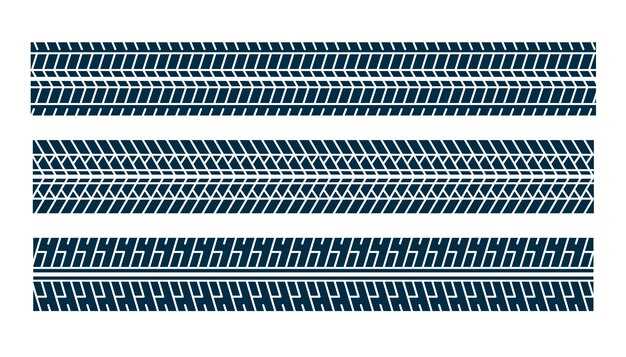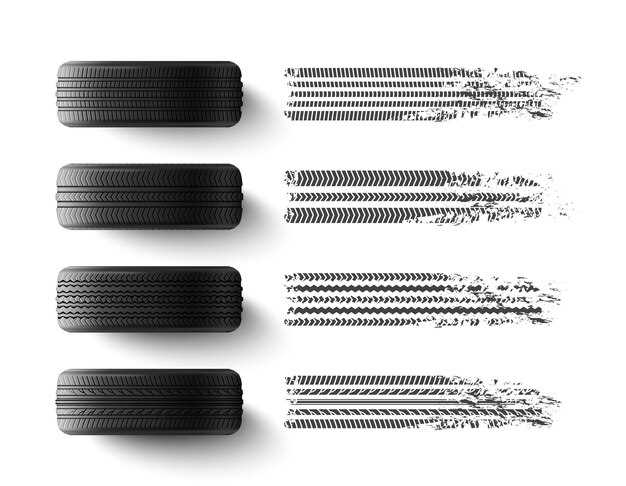
Tires are one of the most crucial components of any vehicle, as they are the only contact point between the vehicle and the road. Effective maintenance of tires can significantly enhance safety, fuel efficiency, and the overall performance of a vehicle. However, often overlooked is the importance of understanding tire wear patterns, which can provide invaluable insights into the condition of the tires and the vehicle’s alignment.
Tire wear patterns can indicate various underlying issues, such as misalignment, improper inflation, or inadequate suspension. Recognizing these patterns allows drivers to take proactive measures, ensuring not only the longevity of the tires but also maintaining optimal vehicle performance. By examining the tread wear, drivers can make informed decisions regarding rotations, replacements, and necessary repairs.
In this article, we will explore the different types of tire wear patterns, why they occur, and how to interpret them. Understanding these patterns will enable vehicle owners to implement better maintenance practices, resulting in enhanced safety and efficiency on the road. Let’s delve into the world of tire maintenance and unveil the secrets behind effective tire care.
Identifying Common Tire Wear Patterns and Their Causes

Tire wear patterns provide crucial insights into the condition of a vehicle and can help in identifying underlying issues that may require attention. By understanding common wear patterns, vehicle owners can implement necessary maintenance to enhance safety and performance.
One prevalent wear pattern is center wear, where the tread is worn more in the middle than on the edges. This typically indicates over-inflation of the tires, causing them to bulge in the center and making the central tread wear faster. To mitigate this, regular tire pressure checks are essential to maintain the recommended levels.
Another common pattern is edge wear, characterized by more significant wear on the outer edges of the tread. This often results from under-inflation or improper alignment, which causes the tire to roll on its edges rather than flat. Maintaining correct inflation and ensuring proper wheel alignment can help resolve this issue.
Uneven wear, where one side of the tire shows more wear than the other, can stem from misalignment of the wheels. This misalignment leads to tires not making uniform contact with the road, resulting in excessive wear on one side. Regular alignment checks and adjustments can prevent this problem and extend the life of the tires.
Cupping or scalloping is another specific wear pattern, where the tread develops high and low points, creating a bumpy surface. This often indicates worn suspension components or issues with the vehicle’s alignment. Addressing suspension problems and ensuring proper wheel alignment will help minimize cupping and improve ride quality.
Feathering appears as a series of small, raised edges on the tread and is a sign of incorrect alignment or issues with the suspension system. This pattern requires immediate attention to avoid further tire damage and ensure safe driving conditions.
Lastly, rapid wear may occur due to aggressive driving habits, such as hard braking and sharp turning, which can accelerate tire degradation. Adopting smoother driving techniques can lead to a more gradual and even wear pattern, extending the life of the tires.
Recognizing these common tire wear patterns is essential for effective vehicle maintenance. Timely intervention based on observed wear can not only enhance tire longevity but also improve overall vehicle safety.
How to Diagnose Alignment and Inflation Issues from Tire Wear
Tire wear patterns provide crucial insights into the health of your vehicle’s alignment and inflation. By closely examining the wear on your tires, you can uncover underlying issues that may require immediate attention.
First, observe the tread wear. Even wear across the entire tire surface typically indicates proper alignment and inflation. Conversely, if the tread is noticeably worn on one side, it may suggest a misalignment. For instance, if the inner edge exhibits more wear, this points to a condition known as “camber misalignment,” while excessive outer edge wear indicates potential “toe misalignment.”
Next, check for uneven wear patterns, such as scalloping or cupping. These irregularities often signal that the vehicle’s suspension may not be functioning effectively or that the tires are overinflated or underinflated. It is essential to inspect the consistency of the tread pattern across each tire; any abnormality could point to mechanical issues that need addressing.
In addition, look for signs of excessive wear in specific areas. Center wear suggests overinflation, while edge wear is indicative of underinflation. Maintaining the correct tire pressure is vital, as both conditions can compromise tire longevity and vehicle safety.
Lastly, consider the overall lifespan of your tires. If the wear appears premature and inconsistent with the manufacturer’s recommendations based on mileage, it could be a strong sign that alignment or inflation issues exist. Addressing these factors promptly will not only enhance tire performance but also improve overall vehicle safety.
Practical Tips for Extending Tire Life Based on Wear Observations

Regularly monitoring tire wear patterns can provide valuable insights into vehicle performance and maintenance needs. By paying attention to these patterns, you can implement practical strategies to extend tire life.
Firstly, conduct routine inspections of your tires to identify uneven wear. This can indicate improper alignment, so ensuring that the wheels are correctly aligned is essential. An alignment check every six months can help prevent premature tire wear.
Secondly, regularly rotate your tires according to the manufacturer’s recommendations. Tire rotation helps to balance the wear across all tires, especially since front and rear tires can wear differently due to varying weight distributions and driving habits.
Additionally, checking and maintaining the correct tire pressure is crucial. Under-inflated tires lead to excessive wear on the edges, while over-inflated tires can wear out the center tread. Use a reliable tire pressure gauge to check the pressure at least once a month, and adjust as necessary.
Moreover, consider the driving conditions you frequently encounter. If you often drive on rough or unpaved roads, your tires might experience more wear. Choosing tires designed for off-road conditions can help mitigate damage and extend their life.
Finally, practice good driving habits. Avoid rapid acceleration, hard braking, and aggressive cornering, as these behaviors can lead to increased tire wear. Smooth driving reduces stress on tires and promotes even wear.
By implementing these practical tips based on wear observations, you can effectively extend the life of your tires, ensuring both safety and efficiency throughout their lifespan.


